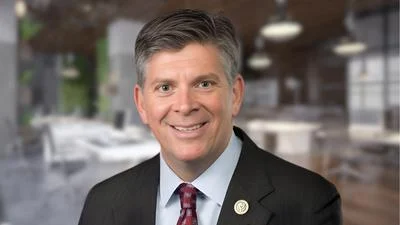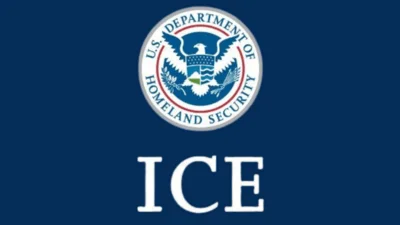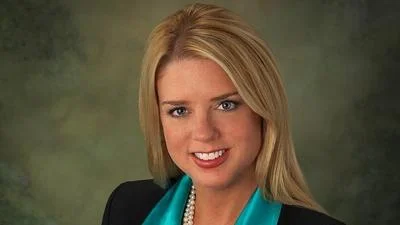Commerce Secretary Gary Locke Remarks at Edison Electric Institute "Powering the People" Conference Good afternoon. Thanks Jim for those words, and for being such a powerful voice for transforming how we power America.
The way America uses energy and where we get it from has certainly been a subject of spirited debate these past few years.
That's not going to change anytime soon.
But today, I’d like to talk about how the Obama administration is working towards a long-term, end goal I think we can all agree on.
Providing more clean and affordable energy to American consumers.
Here's how the Obama administration is trying to help address this challenge, both in terms of electricity generation and distribution.
First, we’ve been working to make cleaner sources of energy more economical and practical.
The American Recovery and Reinvestment Act invested more than $80 billion in: At the Commerce Department, we have been working to improve our services to support renewable energy.
Just this past January, we signed an agreement with the Department of Energy to improve ocean and climate observations, modeling, and forecasting.
This information is crucial for utilities seeking to find the best renewable energy solutions to fit their unique needs.
The Obama administration has also helped to push forward the construction of new nuclear power plants for the first time in decades. Last year for example, the Energy Department announced a conditional commitment for a loan guarantee to help construct twin nuclear reactors in Burke County, Georgia.
The Energy Department is also working with sponsors of several other nuclear projects, and is seeking additional nuclear loan authority from Congress.
Of course, support of cleaner energy sources is only half the battle. We’ve also got to more efficiently deliver this energy to businesses and consumers who need it.
That’s why the Obama administration has made it a priority to support a national smart electric grid.
The American utility industry is obviously the biggest stakeholder in this effort, with the potential benefits of a smart electric grid well known to everyone in this room: If adopted nationwide: But the real potential is in what it can do for consumers: Designing, building and installing smart grid technology can also be a major job creator.
Consider that the $11 billion in Recovery Act smart grid investments alone are projected to directly create 43,000 jobs and support another 61,000 in the private sector.
Another 30,000 jobs will come from a smart grid workforce program backed by $100 million in Department of Energy funding and an additional $95 million from community colleges, universities, utilities and manufacturers.
This program will fund 54 smart grid workforce training programs across America to prepare the next generation of utility and electrical manufacturing workers.
Meanwhile, to ensure America’s smart grid industry is globally competitive, Commerce’s International Trade Administration is working with partners around the world to promote U.S. products and services in markets where smart grid investment is ramping up.
So the smart grid is a clear win-win – for our economy and for the environment.
The potential of adopting a smart grid is immense.
But so are the challenges.
There is the difficulty of ensuring the array of smart grid hardware and software is compatible, -- a challenge the Commerce Department's National Institute of Standards and Technology or NIST, is working with industry to solve.
NIST has collected input from 600 organizations and 1,600 individual members, some of whom are probably in this audience.
NIST recently rolled out Version 1.0 of the Interoperability Framework, which identified, prioritized and addressed new requirements for Smart Grid interoperability and security.
This was done with unprecedented speed as NIST developed in just 18 months the type of rigorous standards that took the telecom industry more than five years.
These initiatives are a start... and many more standards and protocols need to be developed.
But it’s critical that we get it right – not just domestically, but internationally as well.
If smart grid standards develop in a piecemeal manner, countries may not easily benefit from the innovations developed in another...
... or technologies developed today may be rendered obsolete as countries with large market potential later decide on their standards.
So it is incumbent that all those engaged in developing U.S. smart grid standards are also actively engaged on the international scene.
Establishing common standards for smart grid technologies is an attainable goal we’ll keep working hard to achieve.
But even if we solve that challenge, utilities are still burdened with a set of local, state and federal regulations that were designed almost a century ago to meet very different priorities.
Jim Rogers has talked often and eloquently about this.
In the 1930s the major energy challenge facing the United States was supplying enough energy to all its residents.
And regulations were put in place to incentivize energy production and energy accessibility.
Mission accomplished. We have achieved universal electrical coverage in the U.S.
But today we aren’t just concerned about the availability of energy. We’re also concerned with where it comes from and how efficiently it's distributed.
It’s no longer acceptable for us to be losing two thirds of primary energy between the power plant and the consumers’ plug.
But in too many areas of the country, the dominant financial incentives only reward utilities for cranking out more power.
In other words, if a utility wants to build a new power plant to meet increased demand, it’s allowed to pass the costs on to consumers for the construction and maintenance of the plant and a reasonable profit.
But if the utility can meet that same added demand with efficiency measures like weatherizing homes, retrofitting buildings and deploying a smart grid, they have to eat much of the costs.
If you’re a utility with a choice between profitably building a new power plant or investing in efficiency that not only won't be profitable, but might cost you money as your customers use less power, it’s really no choice at all.
That power plant is getting built.
Of course, the picture is rarely this black and white.
Some utility commissions have put efficiency measures like the smart grid on almost equal footing with new power generation when they're making rate base decisions.
Others offer little financial incentive for efficiency.
And there are plenty of gradations in between.
There isn’t a one-size-fits-all solution, not when utilities in different regions have different ownership structures and different embedded costs.
And not when consumers in different regions of the country have such different perceptions of the benefits and the perceived drawbacks of smart grid technology.
But the fact is that the full potential of the smart grid will be unlocked until incentives are shifted for utilities to be rewarded for better efficiency.
To grapple with these regulatory challenges, the White House’s National Science and Technology Council recently created a smart grid panel of experts, co-chaired by representatives from NIST and the Department of Energy.
The panel is working closely with state regulators and other stakeholders to overcome the range of technical, economic, regulatory and sociological hurdles to smart grid adoption.
The utility industry will ultimately be in the lead on smart grid development.
But the federal government can help: If we get this right, all of us have an almost unprecedented opportunity to change how we use electricity, reduce greenhouse gas emissions, and create good new jobs in an emerging industry.
As Smart Grid technology, standards, and policy discussions move ahead throughout the upcoming year, I look forward to working with all of you to meet this historic challenge.
Source: U.S. Department of Commerce








